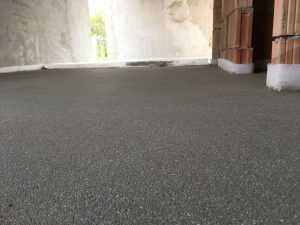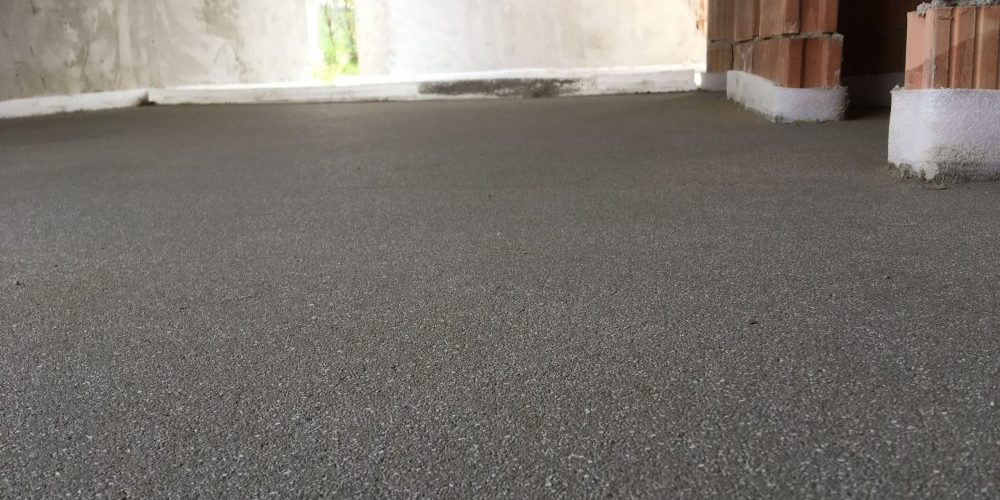The story of a concreting job
I have built twice in my life, but I have poured concrete many times. Determining the quantity of reinforcing steel, sourcing or preparing concrete has always been a challenge, along with transporting it to the site and incorporating it.

During construction and renovation, numerous concrete works arise that do not require the services of a structural engineer, but the concrete structure needs to be reinforced with one or two layers of welded mesh. Examples include sidewalks, floor slabs, driveway, courtyard concreting, non-load-bearing stairs, pools, and pits.
The reinforcing steel mesh prevents the concrete from cracking during the curing process and significantly increases its strength.
However, the procurement and placement of the reinforcing mesh involve a lot of work and are often quite time-consuming.
Is there an alternative to the reinforcing steel mesh?
In 2018, I encountered a brilliant and innovative solution that not only replaces the use of reinforcing steel mesh in the previous cases – thus freeing us from a lot of hassle – but also achieves significant cost savings by creating an extremely strong composite concrete as the end result.
The product used to reinforce the concrete is called structural macrofiber. This is a high-performance fiber made of polypropylene with a ribbed surface. One kilogram of structural fiber can contain up to 50,000 individual fibers, and a single fiber is capable of supporting a weight of 8 kilograms. You can imagine the strength of 50,000 fibers combined—they could even support a Boeing 747 aircraft together.
I looked into the possible applications, and I was pleasantly surprised by how many advantages this material offers.
After a thorough study of structural macrofibers, I have come to the conclusion that:
With this material, we can produce composite concrete with the same (or even better) technical content as reinforced concrete, much more cost-effectively than using traditional reinforcing steel. By ‘much more cost-effective,’ I mean 50% or more, depending on the thickness of the concrete and the quantity of the replaced reinforcing steel mesh.
The weight of the macrofibers is a fraction (5-10%) of the weight of the replaced reinforcing steel. Its integration is incredibly simple and cannot be compared to the complexities of working with reinforcing steel: you just need to thoroughly mix it with the fresh concrete being prepared. For most of our clients, the simpler and faster execution is the most significant advantage.
The shipping cost is a fraction of the transportation cost of reinforcing steel. Additionally, for the purchase of several packages, shipping is free.
Accessible to anyone: the courier delivers it to your doorstep.
I know it’s not easy to change the centuries-old, well-established methods of concreting, but based on the experiences, it’s worth considering this option if we want to simplify the concreting process and save money.
Thousands of satisfied users in Hungary prove that it’s not only suitable for replacing the reinforcing steel mesh but also eliminates various risks in concreting. Here, you can read numerous user reviews.

It’s important to emphasize that for now, the structural macrofiber is not suitable for creating self-supporting structures. Therefore, it does not replace reinforcing steel in tasks such as floor slabs, beams, bridges, and other concreting works requiring serious static calculations.
Most people approach this groundbreaking discovery with skepticism, while innovative users dive in with laughter, surpassing everyone else—casting aside their prejudices—and only regretting not finding this solution sooner.
Fiber-reinforced concrete can be prepared with any technology: with a drill, concrete mixer, screed pump, or mixer truck. No matter the conditions or the type of concrete you use—aggregate-cement-water mix, bagged concrete, or ready-mix concrete.
Structural macrofibers earned this name because they can be statically dimensioned during the design of a concrete structure. Their quality and usability are regulated by international standards, so it’s not an invention of ours. Many countries manufacture these, and they have been used in concreting projects ranging from metro tunnels to industrial floors and roads, proving their effectiveness for decades.
For the construction of a 100 m2, 10 cm thick driveway, 40 kg of ArmoTec can replace 500 kg of structural mesh, providing load distribution and crack prevention. The dosage depends on the thickness and expected load. For easier calculations, we have developed our calculator, accessible here: ArmoTec Calculator. In such a project, up to 150,000 HUF can be saved.
Structural fibers are not only suitable for replacing the reinforcing steel mesh but also result in significantly more durable concrete. By preventing the formation of micro-cracks, harmful substances cannot penetrate the structure, significantly increasing the lifespan of the concrete.
And spend the saved money on something much better than reinforcing steel 🙂








